Tulip Tree or Yellow Poplar

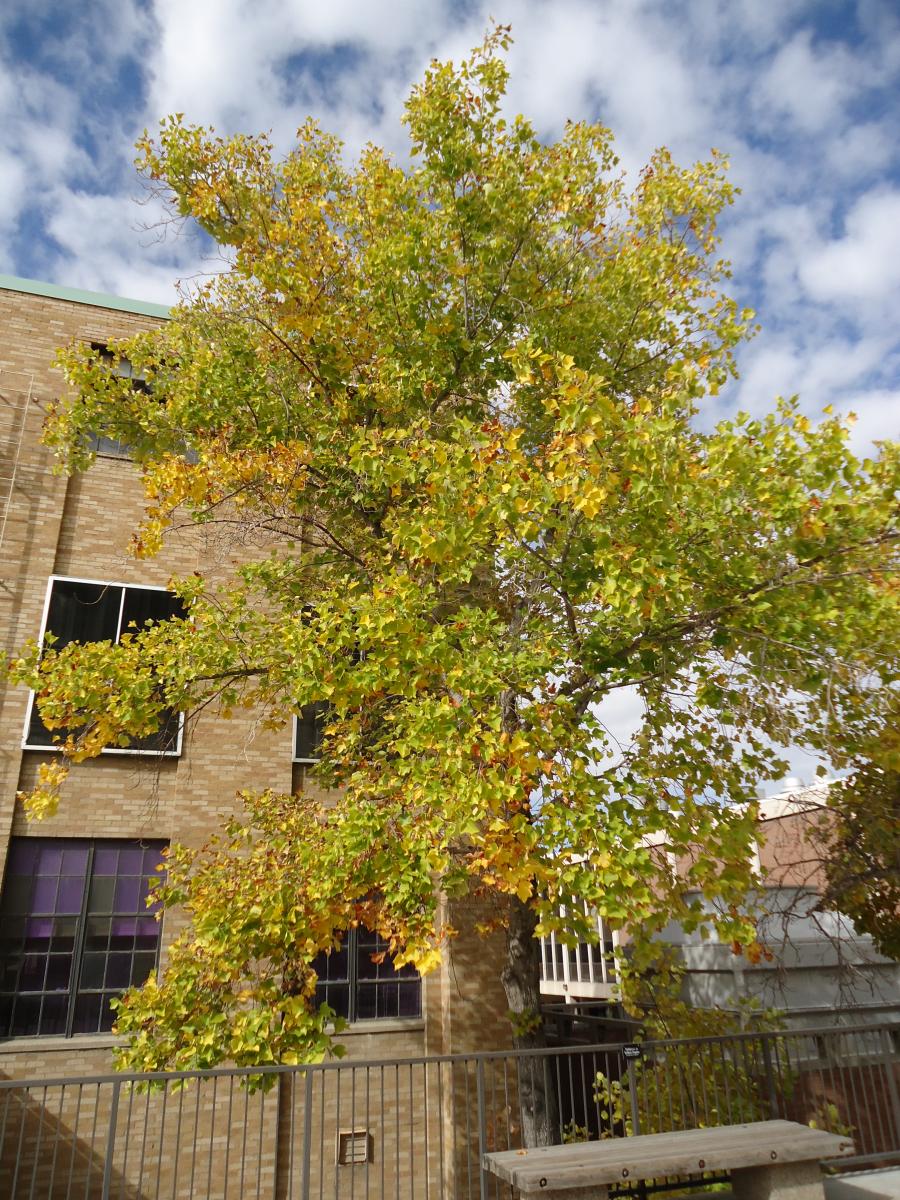
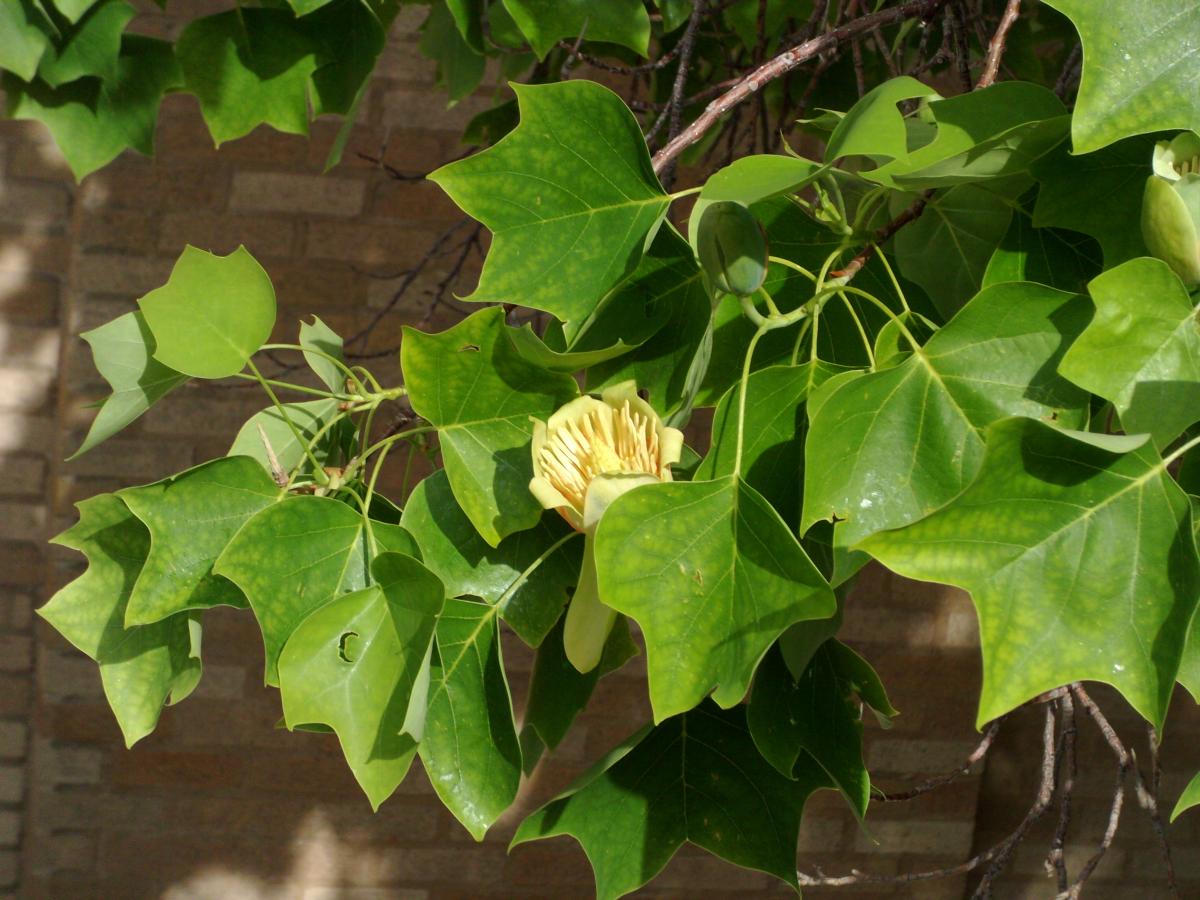
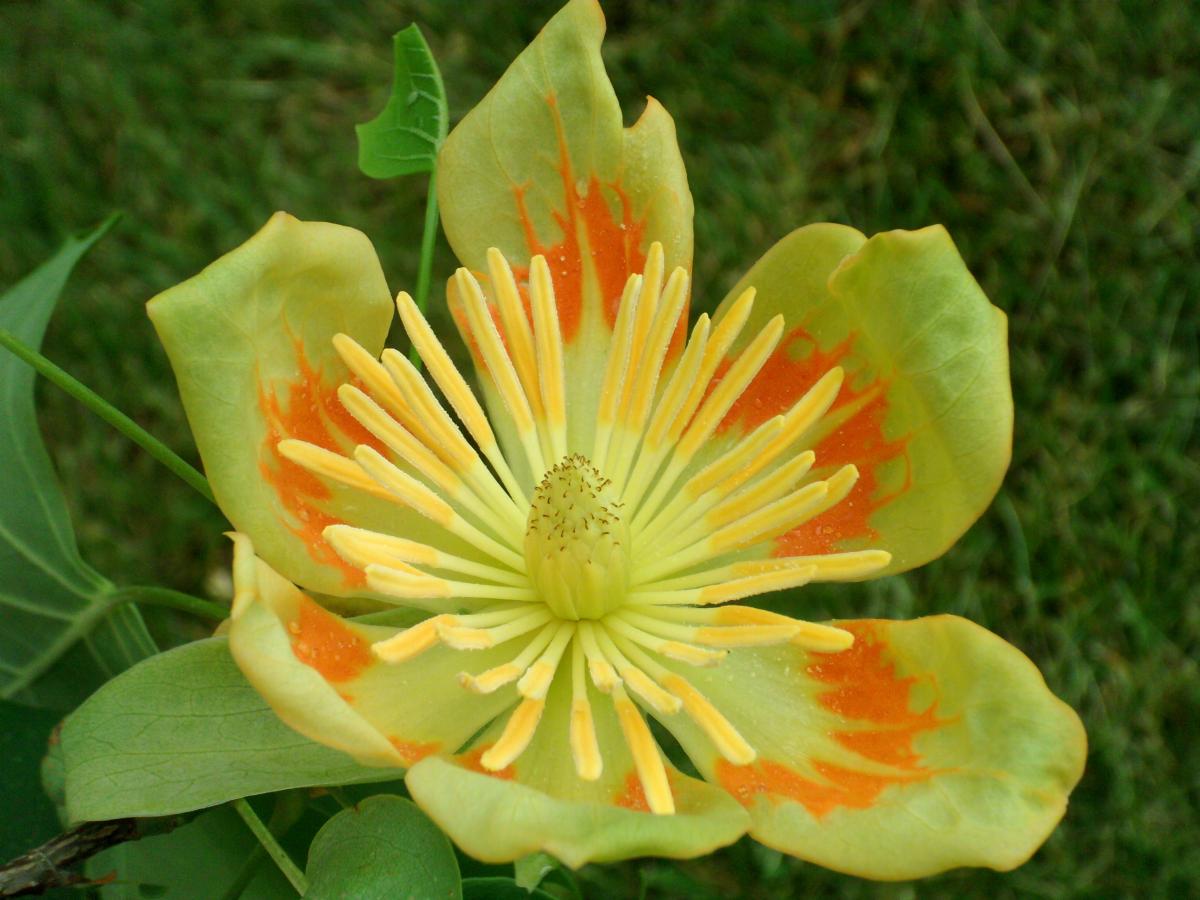
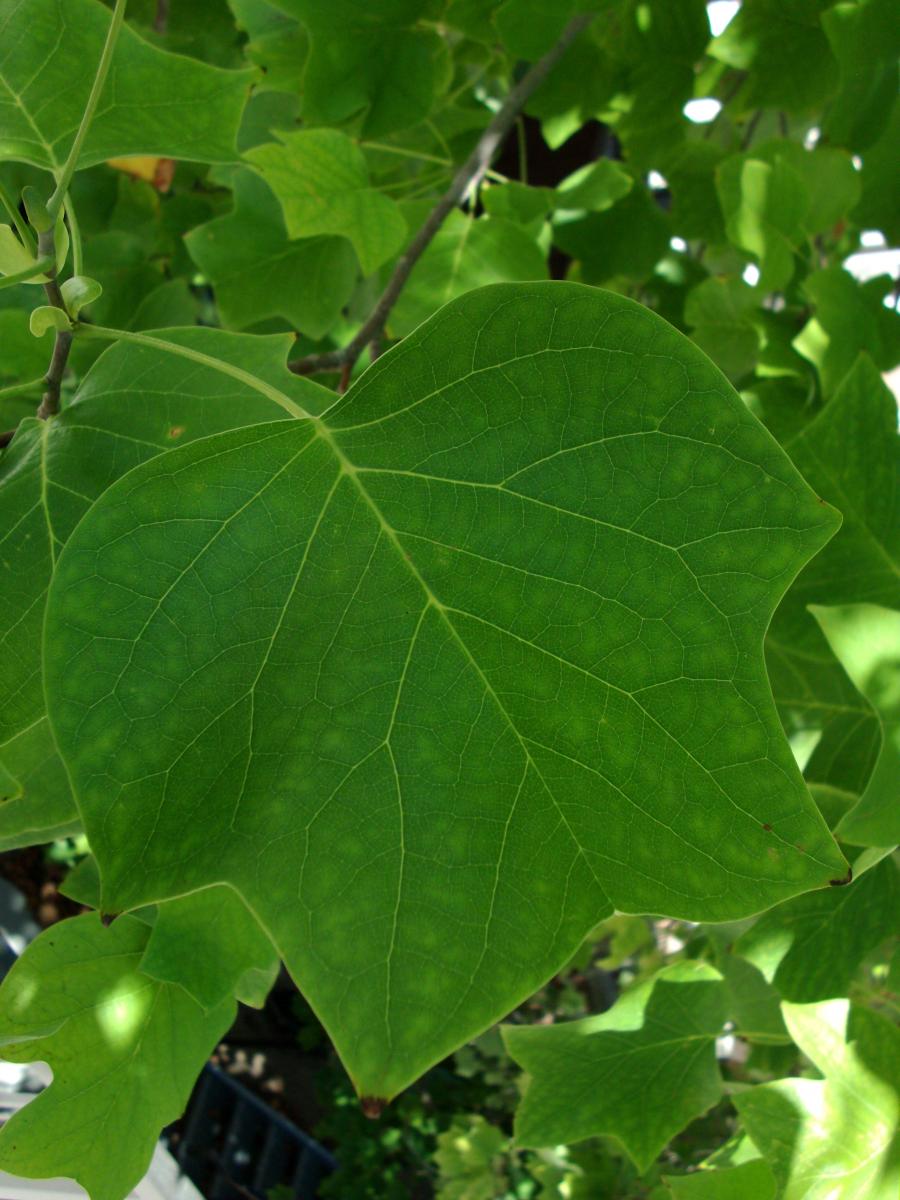
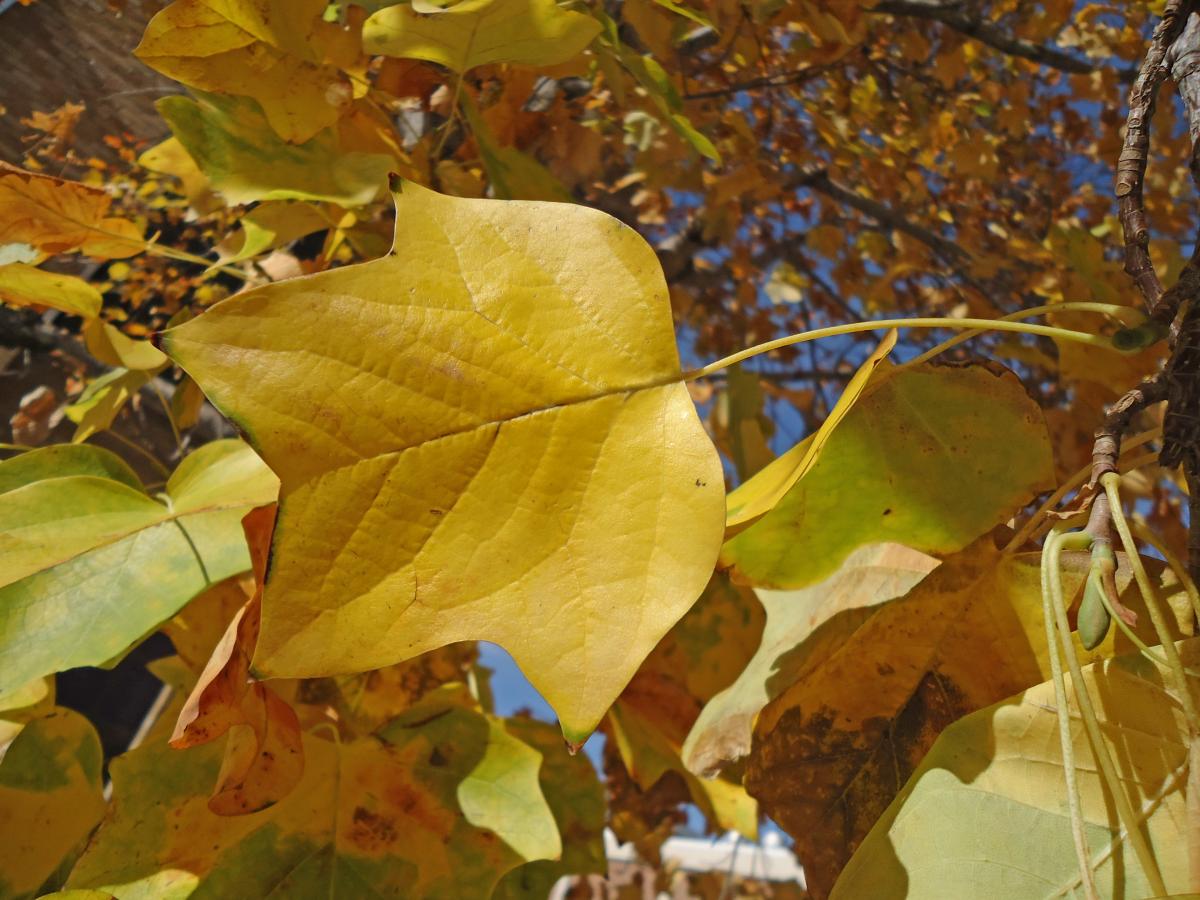
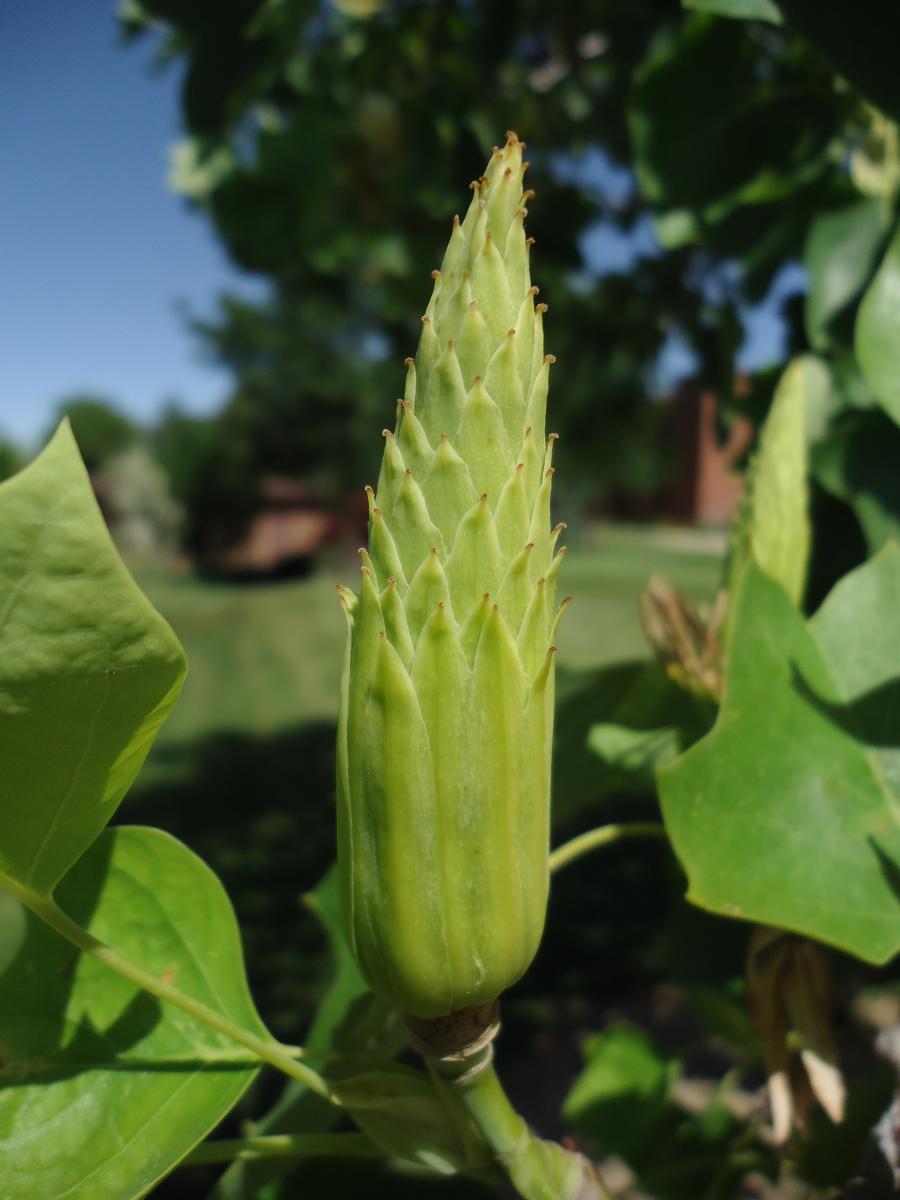

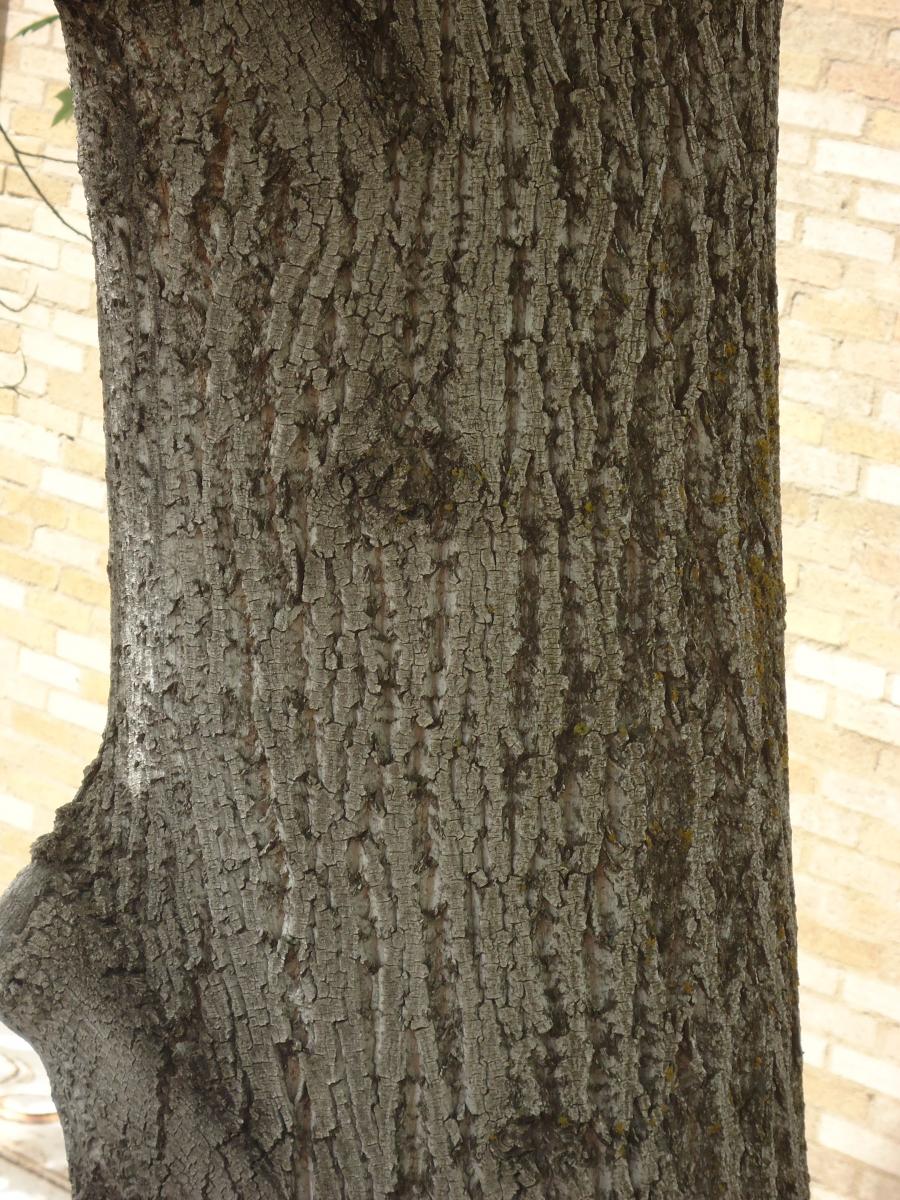
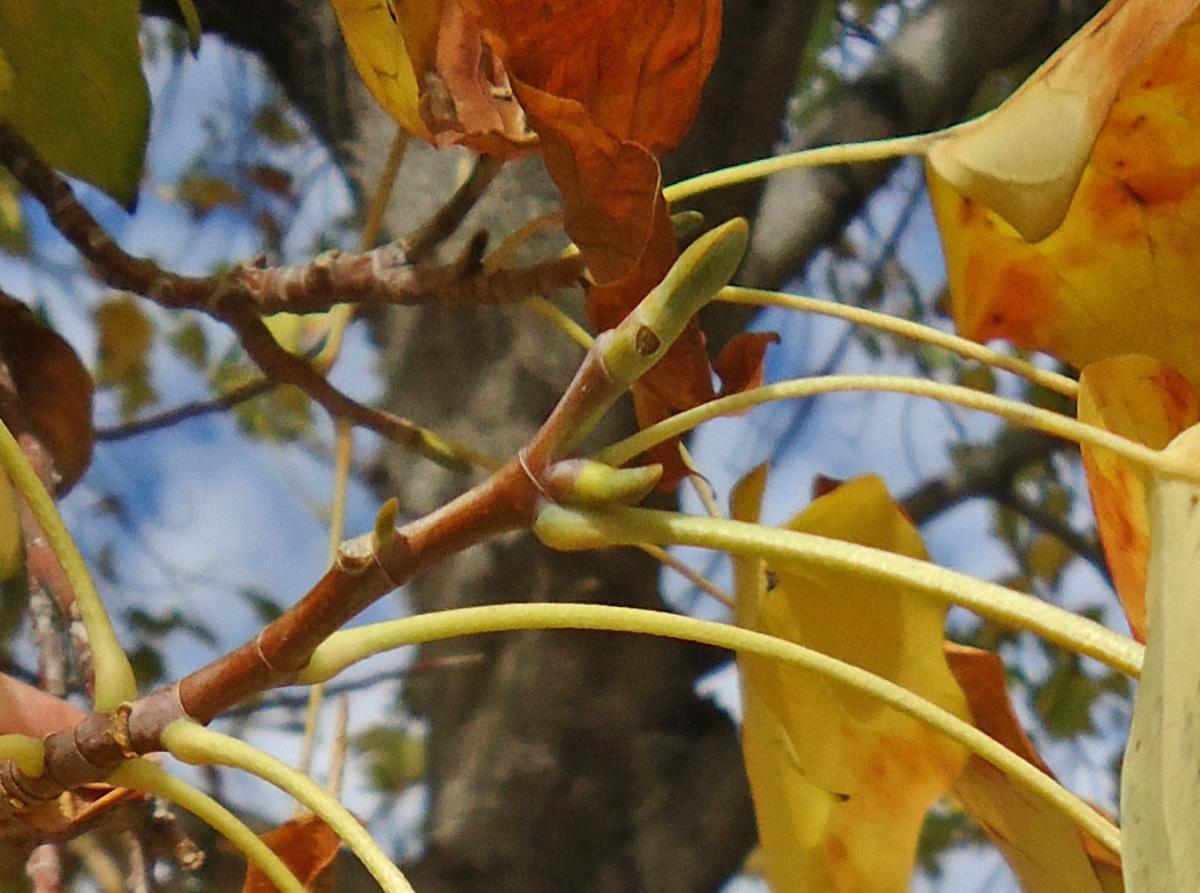
Liriodendron tulipifera
Leaves: Deciduous. Very unique leaves, 3 to 8 inches long and wide with 4 lobes. Leaves are basically square-shaped with a flat base and tip. Upper leaf is bright medium green color. Underside is significantly lighter. Fall color is golden yellow.
Bark/Twigs: Bark is light grayish-brown in color. Interesting texture, furrows into close interlacing ridges separated by grayish crevices. Ash gray thick furrows with rough ridges. Buds on twigs are very unique and look like a duck-bill.
Flowers/Fruit: Tulip-shaped flowers are greenish yellow with a bright orange band around the blossoms. 6 greenish-yellow petals grow in 2 rows and are 2 to 3 inches tall, 1½ to 3 inches wide. The center of the flower has multiple thick, pale orange-yellow stamens. Blooms in early summer (May to June). Cone-like fruits 2 to 3 inches long turn brown and persist through winter.
Mature size and shape: Large. 70 to 80 feet high x 35 to 40 feet wide. Somewhat pyramidal shape when young. Becomes more broad and oval-rounded at the top with age.
General information/special features: Plant in full sun. Young trees establish well in partial shade. Prefers moist, well-drained, acidic soil. Does well in heavy soils. It also is known as tulip tree magnolia, whitewood and canoewood because Native Americans once fashioned dugout canoes from its trunk. Wood is used for furniture. The tulip poplar wood is a top choice of organ makers. The inner bark of the roots yields an alkaloid and heart stimulant. The flowers produce nectar used in gourmet honey.
Landscape use and maintenance: Good large shade tree with unique flowers. Generally planted as a single tree and needs plenty of room to grow. Not good in small residential areas. Fast growing rate. Average maintenance. Transplant in the spring. Prune in winter.
USDA Hardiness Zone: 4 to 9
Family/Origin: Magnoliaceae – Magnolia. Native to the southeastern U.S. as far north as southeast Missouri, and as far northeast as Vermont. Not a true poplar.
Campus Use: Somewhat uncommon. Can be found east of South Physics Building (Bld 10) and south of C. Roland Christensen Center (Bld 77) in the eating area.
